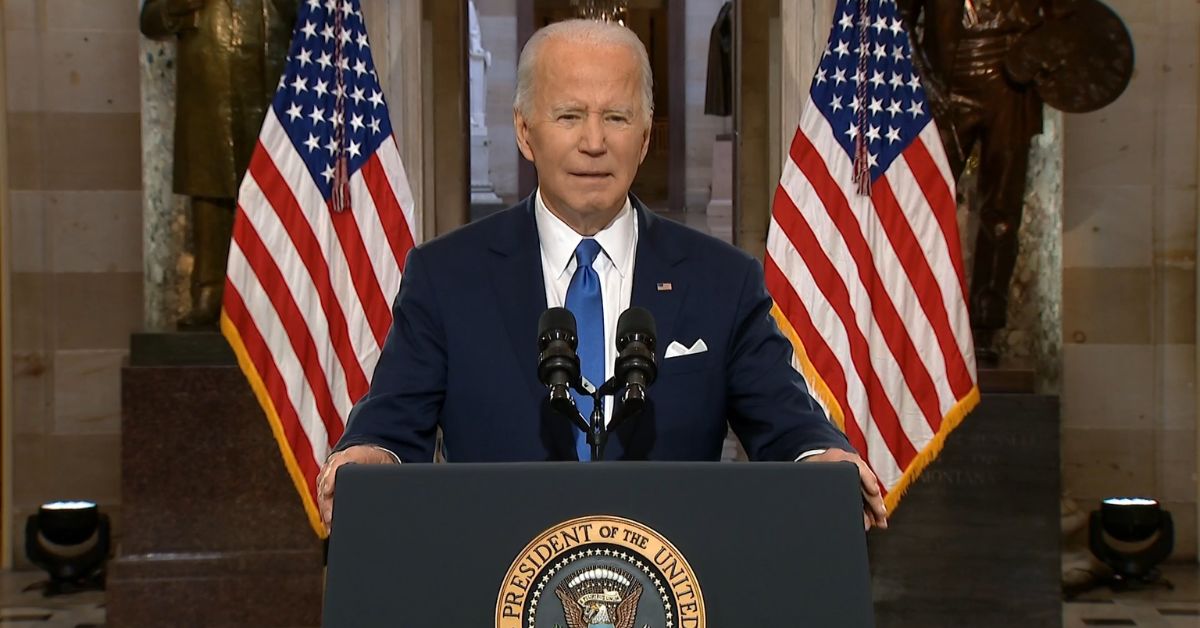The Biden administration and House Republicans are heading toward the first debt ceiling deadline on Thursday without even a hint of a solution. This means there will be a standoff for months, which will likely shake the financial markets and make people worry about a recession this year.
The two sides are just shrugging as the Treasury Department warns that the country will hit the $31.4 trillion borrowing limit on Thursday. However, this is not a hard deadline because the department can still use extraordinary measures to pay the bills for a few more months. But it means that the potential economic doomsday clock is now officially ticking. House Republicans insist on huge spending cuts before they help raise the debt ceiling, but Democrats won’t even talk about the idea.
Last week, Treasury Secretary Janet Yellen said that the U.S. probably won’t run out of cash or use up all of these options until at least early June. Until then, the department has stopped investing in some government retirement funds and is hoping that the House GOP and Democrats can come to an agreement to keep the government from careening into an economic crisis with far-reaching effects.
But Yellen’s warning to congressional leaders hasn’t led to the first steps toward a deal between the White House and Congress. The year’s most significant legislative fight is just getting started, and it looks like it could get even messier than the 15-ballot speakership fight, with no clear way out in sight.
Even some Republicans thought to be more likely to negotiate with the White House are already criticizing the administration’s position after White House press secretary Karine Jean-Pierre said last week, “We will not be negotiating.”
Rep. Kelly Armstrong (R-ND) said, “Maybe we shouldn’t draw lines in the sand so quickly, and that goes for the White House, too.” She said it was “disappointing” that the administration wouldn’t negotiate on fiscal reforms. “If we don’t pay our debts, there will be many bad things that happen,” he said. “I don’t want to make everyone’s 401(k) account go to the bottom. They’ve had a hard year already.”
The White House is already working behind the scenes to get around Speaker Kevin McCarthy. This includes sending its top advisers to meet with moderate Republicans, especially those who won in districts that President Joe Biden won in 2020, hoping that Democrats can count on these GOP lawmakers to cross the aisle and vote to raise the debt ceiling.
“I think that’s a real possibility,” a senior House Republican said. “Kevin would probably love it if that happened because then he wouldn’t have to say, ‘It wasn’t me.'” Others think the White House needs to take a different approach if they want people on both sides of the aisle to work together.

Rep. Don Bacon (R-Neb.) said he hasn’t heard from the White House, but Biden’s first statement that there would be no negotiations was a non-starter. “Republicans can’t get everything they want with only half of Congress in their hands, but our voters sent us to Washington, D.C. to keep spending in check, so the Democrats need to move in our direction, too.” He also said, “Both sides need to negotiate in good faith.”
A key part of the deal McCarthy made with the 20 conservative holdouts to finally get the speakership was to give in on the debt ceiling. He agreed that the GOP House wouldn’t move to raise the debt ceiling until at least $130 billion in federal spending is cut in the next fiscal year, or broader fiscal reforms are made to deal with the growing debt, which many Republicans say threatens the economic security and future of the country.
Sen. Chris Van Hollen said that these spending cuts should be negotiated as part of the annual budget and appropriations process, which Congress will also have to deal with later this year (D-Md.). He said it shouldn’t happen during a high-stakes fight over the country’s ability to borrow money. “We’ve made ourselves clear. The President has made himself clear. “It’s everyone’s job to make sure the U.S. pays its bills on time,” said Van Hollen. “The debt ceiling and paying our bills on time will not be up for discussion.”
But Republicans said that concrete talks about possible demands haven’t even started. This is because they are still deciding how to fill their committees, which was delayed by the fight for the speakership.
As the fight over the debt ceiling officially begins, some GOP members are starting to talk about more specific plans, like bringing back a controversial plan that former Sen. Pat Toomey (R-Pa.) put forward during a similar fight about a decade ago. If the two sides didn’t agree, this plan would tell the government how to pay its bondholders and which other financial obligations would be dropped.
Rep. Ralph Norman (R-S.C.), a Freedom Caucus member who was one of the 20 conservative McCarthy holdouts, said, “I fully support the debt prioritization plan because it is one of many steps that need to be taken.” Norman has said that balancing the budget in the next ten years or less is his top goal.
In the meantime, the biggest worry on the financial markets is whether the fight over the debt ceiling will cause the U.S. to miss a payment to bondholders. The global financial system is built on Treasuries, usually considered safe investments. They are also closely linked to lending products like mortgages. If the government misses a payment, the stock market could fall off a cliff.
Wall Street analysts disagree on how much of a threat the standoff is to the economy, with some hoping that Congress and the White House will come to an agreement before the government misses any debt payments.
Rep. Chip Roy (R-Texas), one of the 20 holdouts, is one of the Republicans pushing the payment prioritization plan. The plan was first reported by the Washington Post. He told the Post, “We agreed to move a bill to prioritize debt through regular order by the end of the first quarter of 2023… Now, that wasn’t explained in detail (there are different versions),”
Republicans and budget experts disagree, and the administration has already shot it down. White House chief of staff Ron Klain said on Twitter that it would cause “CHAOS” in the U.S. and “cut off funding” for food safety, FAA operations, border security, and drug enforcement.
“This so-called prioritization scheme makes it pretty clear what the Republican priorities are,” Jean-Pierre said Tuesday. “They want rich bondholders to have more power than regular Americans.”
It’s not clear what the Treasury Department can do to prioritize payments. Last week, officials wouldn’t say if it’s even a possibility. In a speech in December, a top Treasury official said that deadlocks over the debt limit hurt the department’s cash balance and caused the market to be unstable. In 2014, Treasury officials told Republicans in the House that the government could technically prioritize payments but that such a plan would be “completely experimental and put too much risk on both the domestic and international financial markets.”
Even if you ignore the payment plan, the debt ceiling is a very important political issue for the House GOP. McCarthy only has a small majority, meaning anyone can move to get rid of him at any time. Even lawmakers who like him think the showdown won’t go well for him. Sen. Kyrsten Sinema said, “It will cost Kevin his job” (I-Ariz.).
If you liked this article, tell us what you think in the comments section. And don’t forget to visit our website, Journalist PR , to find out what’s happening.

Leave a Reply